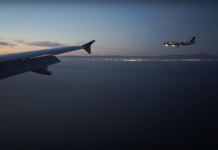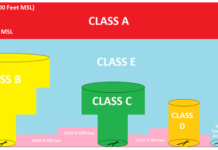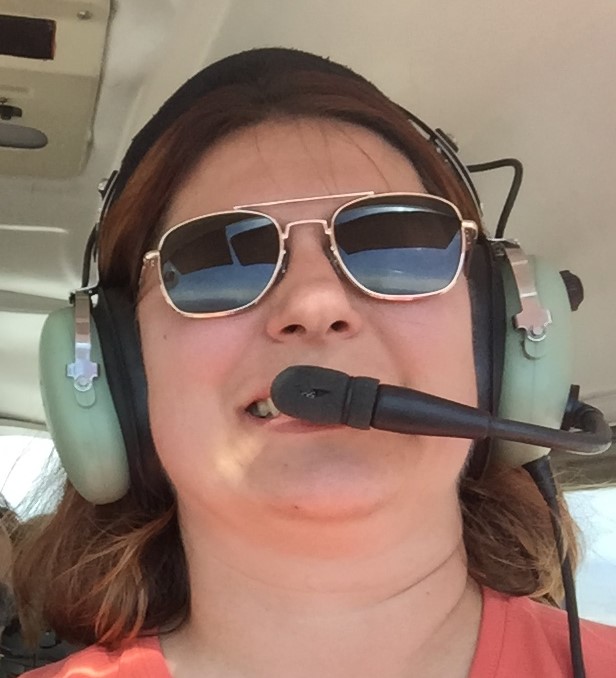Pilots can seem like they have a language all their own. If you’ve ever listened in on the radio when you are on a commercial flight you may have heard things like:
“Taxi Alpha to Charlie Hold Short Tree Zero”
“Skyhawk Niner Niner Quebec at Golf Ready for Takeoff”
“Southwest Four Five Niner exit Foxtrot Tree contact ground”
When speaking on any radio many of the letters of the alphabet, or numbers for that matter, can sound the same. Try saying B,C,D and Z and you may be asked to repeat yourself several times.
Heck, even when talking on cellphones sometimes letters can sound the same. I can’t tell you how many times I’ve had to breakdown and use the phonetic, or aviation, alphabet.

This can cause a problem when you need know what taxi way to be on, or when telling ATC your tail number so they can keep tabs on you in their system.
The miscommunication possibilities is one of the many reasons pilots need to read back clearances to ATC. It makes sure that everyone is on the same page.
What is a phonetic letter?
Phonics, according to the Merriam-Webster dictionary is “a method of teaching people to read and pronounce words by learning the sounds of letters, letter groups, and syllables.”
With that a phonetic letter is the way to pronounce a letter. What is the proper way to pronounce the letter ‘Z’? Depending on which English speaking country you are from it can either be pronounced ‘Zee’ or ‘Zed’.
This confusion of how to pronounce certain letters is another reason why there was a need to standardize the way to say letters over a radio, especially in aviation where you can fly into different countries.
WWI Confusion
During world war 1 there were several variations of the phonetic alphabet being used by various organizations. The Royal Navy used Apples, Butter, Charlie while U.S. servicemen had Able, Baker, Charlie. Even the British Infantrymen were using Ack, Beer, Charlie.
With so many different units and several allied countries all trying to communicate with each other something had to be done. While the difference between Apples, Alpha, Able and Ack or Butter, Baker, Beer and Bravo are minimal when you are not under duress or on the radio; the split second it may take to register what the other person is saying could be the difference between life and death back then.
Unifying Communication
The International Civil Aviation Organization, ICAO, determined that there was a need to account for discrepancies like the one above in aviation so developed a standardized format in the 1950s. Thus the Aviation Alphabet was born.
They took different variations of a phonetic alphabet from around the globe to create what is still used in aviation today.
Instead of saying ‘A’ or ‘Ay’, pilots say ‘Alpha’. Each letter has a word associated with it that starts with the corresponding letter. So all you have to do is listen for the word and determine the first letter of that word to know what the pilots are saying!
- Alpha
- Bravo
- Charlie
- Delta
- Echo
- Foxtrot
- Golf
- Hotel
- India
- Juliett
- Kilo
- Lima
- Mike
- November
- Oscar
- Papa
- Quebec
- Romeo
- Sierra
- Tango
- Uniform
- Victor
- Whiskey
- Xray
- Yankee
- Zulu
What about Numbers?
The numbers 0-9 also have some variations based in clearing up communication.
For example Nine means ‘No’ in German. That could cause some significant communication errors for a German Pilot, or anyone flying in Germany. Instead pilots use the word ‘Niner’ to clear up that issue.
The number three sounds very similar to B, P, Z, and D so ICAO standards use ‘Tree’ instead.
Other numbers have different syllables extremely stressed to aid in understanding which number is truly being said.
- Ze ro
- Wun
- Too
- Tree
- Fow er
- Fife
- Six
- Sev en
- Ate
- Niner
- Hundred
- Tau sand
Each number is stated individually to express a full number. For example, 33,000 feet would be expressed as ‘Tree Tree Tau Sand feet’. The number 4,500 would be ‘Fow er Tau Sand Fife Hundred’ rather than forty-five hundred.
Whew, all this talk makes me want to go fly my plane!
One of the best ways I found to learn the way pilots talk was to listen to LiveATC. You can pick your local airport or a really busy one and hear what’s going on. It’s a safe way, and cheap (read free), way for you to get better at listening to how pilots say things. Listen closely to see if you can hear the aviation alphabet being used!
I’d love to hear what you have to say. Leave me a comment and tell me how I’m doing.






